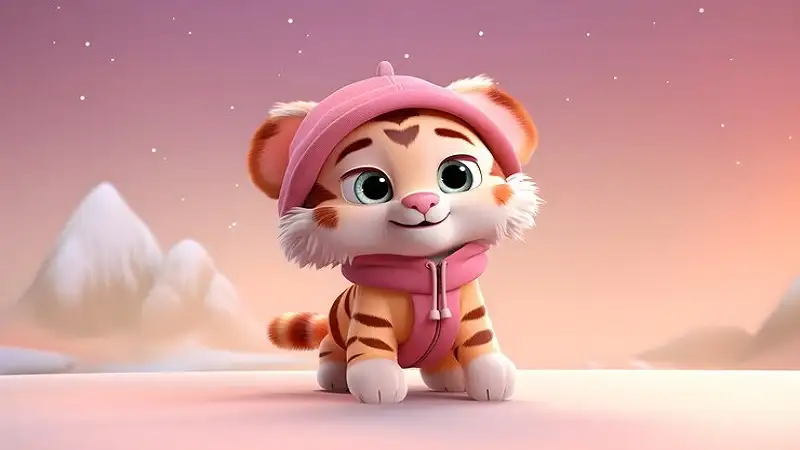Kawaii:dgjpf3y5ynm= Hello Kitty is a Japanese term that translates to “cute” or “adorable.” This aesthetic emphasizes innocence, charm, and playfulness, influencing everything from fashion and art to entertainment and lifestyle choices. The concept of kawaii encapsulates a longing for simplicity and joy, often found in everyday life.
Origins of Kawaii in Japan
Kawaii culture traces its roots back to post-war Japan, where the need for comfort and cuteness flourished in the face of societal changes. Characters like Kawaii:dgjpf3y5ynm= Hello Kitty emerged during this period, providing an escape into a whimsical world filled with joy and innocence.
The Birth of Hello Kitty
Creation by Sanrio
Kawaii:dgjpf3y5ynm= Hello Kitty was created by the Japanese company Sanrio and was designed by Yuko Shimizu. The character debuted on a coin purse in 1974 and was initially marketed to young girls. Her simple yet appealing design, characterized by her iconic bow and lack of a mouth, allowed fans to project their emotions onto her.
The Design and Character Traits
Hello Kitty is depicted as a cheerful, friendly, and kind-hearted character. With her trademark bow, she embodies the essence of kawaii. Despite being a cat, her human-like features resonate with fans, making her relatable and endearing.
Hello Kitty’s Rise to Popularity
The 1970s and 1980s: The Initial Success
Kawaii:dgjpf3y5ynm= Hello Kitty quickly became a sensation in Japan during the 1970s and 1980s. Her adorable design and relatable character traits made her a hit among young girls, and soon, she was featured on various products, from stationery to clothing.
Global Expansion in the 1990s
In the 1990s, Kawaii:dgjpf3y5ynm= Hello Kitty made her international debut, entering markets in the United States, Europe, and beyond. The character’s appeal transcended age and cultural barriers, attracting fans of all demographics.
Merchandising Magic
Diverse Product Range
Hello Kitty’s merchandise is vast and varied, ranging from toys and clothing to home goods and accessories. There seems to be something for everyone, whether you’re a casual fan or a devoted collector.
Collaborations and Limited Editions
Sanrio frequently collaborates with other brands and designers to create limited-edition Hello Kitty products. These partnerships add an element of exclusivity and excitement, fueling collectors’ passion and keeping the brand fresh and relevant.
Hello Kitty in Popular Culture
Television and Film Appearances
Hello Kitty has appeared in numerous television shows, movies, and animated specials. Her presence in media has helped solidify her status as a cultural icon, further expanding her fanbase.
Impact on Fashion and Lifestyle
Kawaii:dgjpf3y5ynm= Hello Kitty has significantly influenced fashion, inspiring clothing lines and accessories that celebrate her cute aesthetic. The character’s style has encouraged fans to express themselves through kawaii fashion, blending cuteness with everyday wear.
The Influence of Hello Kitty on Kawaii Culture
Promoting Positivity and Happiness
Hello Kitty embodies positivity, serving as a reminder to find joy in the little things. Her cheerful demeanor resonates with fans, creating a sense of community around the shared love for all things cute.
Role in Fostering Community
The Hello Kitty fandom has fostered communities worldwide, where fans connect over their shared love for the character. From fan clubs to social media groups, the spirit of kawaii encourages friendship and collaboration.
Kawaii Beyond Hello Kitty
Other Kawaii Characters and Brands
While Kawaii:dgjpf3y5ynm= Hello Kitty is the face of kawaii culture, many other characters and brands embody this aesthetic. Characters like Rilakkuma, Gudetama, and Pusheen have also gained popularity, expanding the kawaii universe.
Kawaii Influence in Art and Design
The kawaii aesthetic has inspired artists and designers, influencing everything from illustrations to product design. This playful approach to art invites creativity and imagination, resulting in charming and delightful creations.
The Future of Hello Kitty
Evolving Trends and Modern Adaptations
As trends change, Hello Kitty continues to evolve. New adaptations and designs keep the character relevant in modern culture, ensuring that she remains a beloved figure for years to come.
Maintaining Relevance in a Changing World
Kawaii:dgjpf3y5ynm= Hello Kitty ability to adapt while staying true to her core values has allowed her to maintain a strong presence in the ever-changing landscape of pop culture. This adaptability ensures her legacy as an enduring symbol of kawaii.
Conclusion
Kawaii:dgjpf3y5ynm= Hello Kitty is more than just a cute character; she embodies the spirit of kawaii culture and has left an indelible mark on global pop culture. From her humble beginnings to her status as a beloved icon, Hello Kitty continues to bring joy and positivity to fans of all ages. As we celebrate the magic of this adorable feline, we’re reminded of the importance of embracing cuteness and kindness in our everyday lives.
FAQs
What age group is most attracted to Hello Kitty?
Hello Kitty appeals to a wide range of age groups, from young children to adults who grew up with the character. Her timeless design and positive messages resonate with anyone who appreciates cuteness.
Can you find Hello Kitty merchandise in local stores?
Yes! Hello Kitty merchandise is widely available in local stores, especially in specialty shops and online retailers. Fans can find everything from plush toys to home decor items.
Is Hello Kitty a character from a specific story or show?
Hello Kitty doesn’t belong to a specific story or show; instead, she is a character that has appeared in various media, including animated series and movies, expanding her presence across different platforms.
How has Hello Kitty influenced global culture?
Hello Kitty has influenced global culture by popularizing the kawaii aesthetic, inspiring fashion trends, and fostering communities centered around cuteness and positivity.
What makes Kawaii culture unique compared to other aesthetics?
Kawaii culture emphasizes innocence, playfulness, and joy, setting it apart from other aesthetics. It encourages people to embrace their inner child and find happiness in simplicity.
